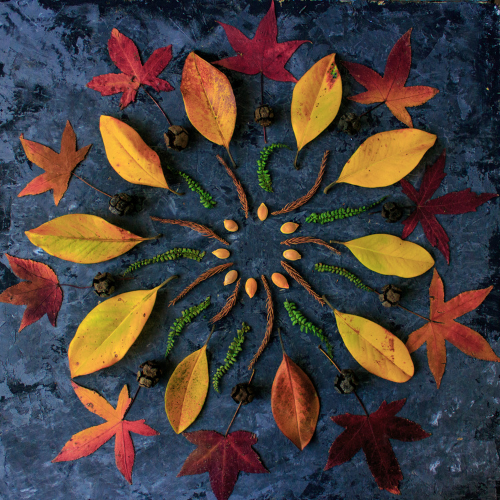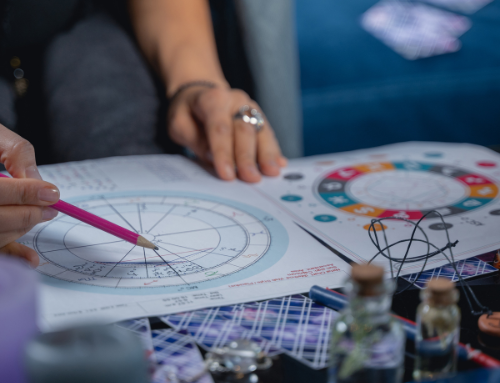Creating a mandala
A mandala is a scared space, often a circle, which can be used as a tool to guide us in our search for balance and harmony. In fact, mandala is a Sanskrit word meaning circle. Mandalas generally have one identifiable centre point, from which emanates a unique array of symbols, shapes, and forms.
Mandalas originated in India thousands of years ago to support Hindu and Buddhist meditation practices and have been used by an array of cultures and civilisations since; including Mayans, Aztecs, Australian Aborigines and European Catholics. In the early 20th century, the Swiss psychoanalyst Carl Jung introduced mandalas as a therapeutic tool to enhance psychological understanding. Today, mandalas are commonly used as an aid to meditation, and to support an individual’s search for meaning, connection and inner peace.
Mandalas give shape to our hopes and dreams, as well as enabling us to process our thoughts and emotions, connecting us to back to the stillness within. There are many options available to purchase a completed mandala, or even a pre drawn template which you can colour according to your preferences (please see list of resources below for a few starting ideas). However, creating one’s own mandala can also be a relatively straightforward, yet rewarding task.
Whilst traditional Tibetan Buddhist practices involved an intricate process of steps to create a mandala, including prior fasting and mediation, one can choose to make the process as simple or as elaborate as one wishes. Before beginning, you may want to spend some time in stillness focussing on the aspects of yourself you may wish to heal, explore, or bring into harmony. The next step is to gather the materials. The simplest option is a piece of plain paper and some coloured pencils or crayons. However, you may wish to use paints, charcoals, or any other drawing apparatus you have available.
One approach is to use a compass or simply free draw an outer circle on your paper, as large or small as you like. Generally, a mandala then starts with drawing a small circle or focal point to represent the centre within this circle. Patterns and shapes may then be drawn around this centre point. When drawing your mandala, let your self be guided by your intuition as to what shapes, colours and patterns feel right to you. If you need inspiration beforehand, or at any time during the creation of your mandala, you can always check out some of the resources below, or any other reference or online site you come across. Remember there is no right or wrong way to create your mandala! The end result will be unique and perfect for you in this moment.
Whilst drawing a mandala is the most common approach, creating a mandala from household pantry items, such as rice and dried lentils or beans, can also be a fun process. Or if you are crafty you may like to crocket or sew the shapes and patterns. Creating a mandala outside, using what you have available, depending on the time of year, including leaves, twigs, and flowers, can also be a wonderful experience, and connect you back to nature in the process.
Once you have created your mandala, you may wish to place it where you will see it regularly, such as on the fridge or next to your computer. You may also choose to sit beside your mandala in quietness to reflect or meditate. In doing so, allow the colours and shapes you have created to help you go inward, finding greater harmony within you and around you in the process.
By Kerrie Clayton
Kerrie has been a member of the AHHCA for 10 years and is currently part of its Committee of Management. She is a qualified Aromatherapist, Nutritionist and Reiki Master, with additional qualifications in colour therapy and Australian Bush flower essences. Kerrie may be contacted via www.wellnesswithkerrie.com
References/Resources
Watts, Laura J. Making Mandalas for Harmony and Healing: A practical guide to using spiritual circles, 2014







Leave A Comment